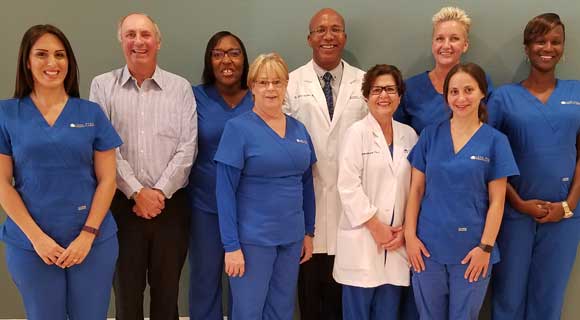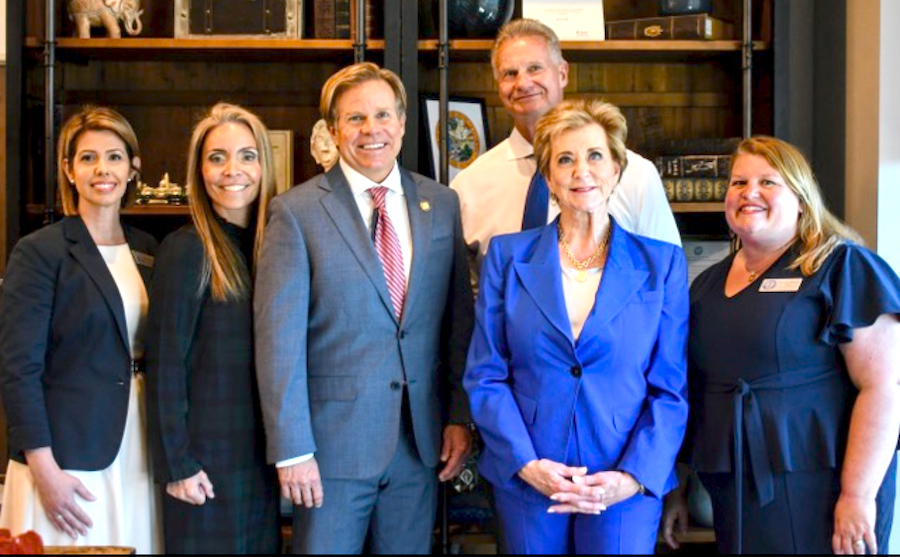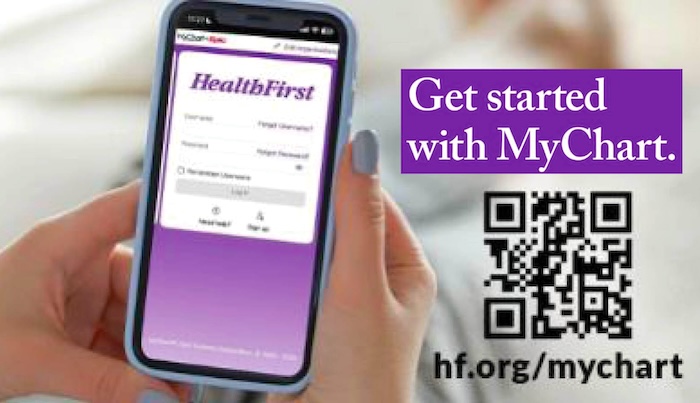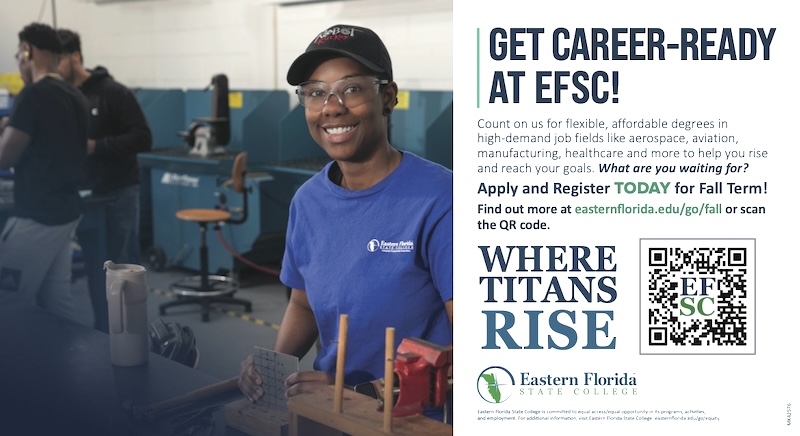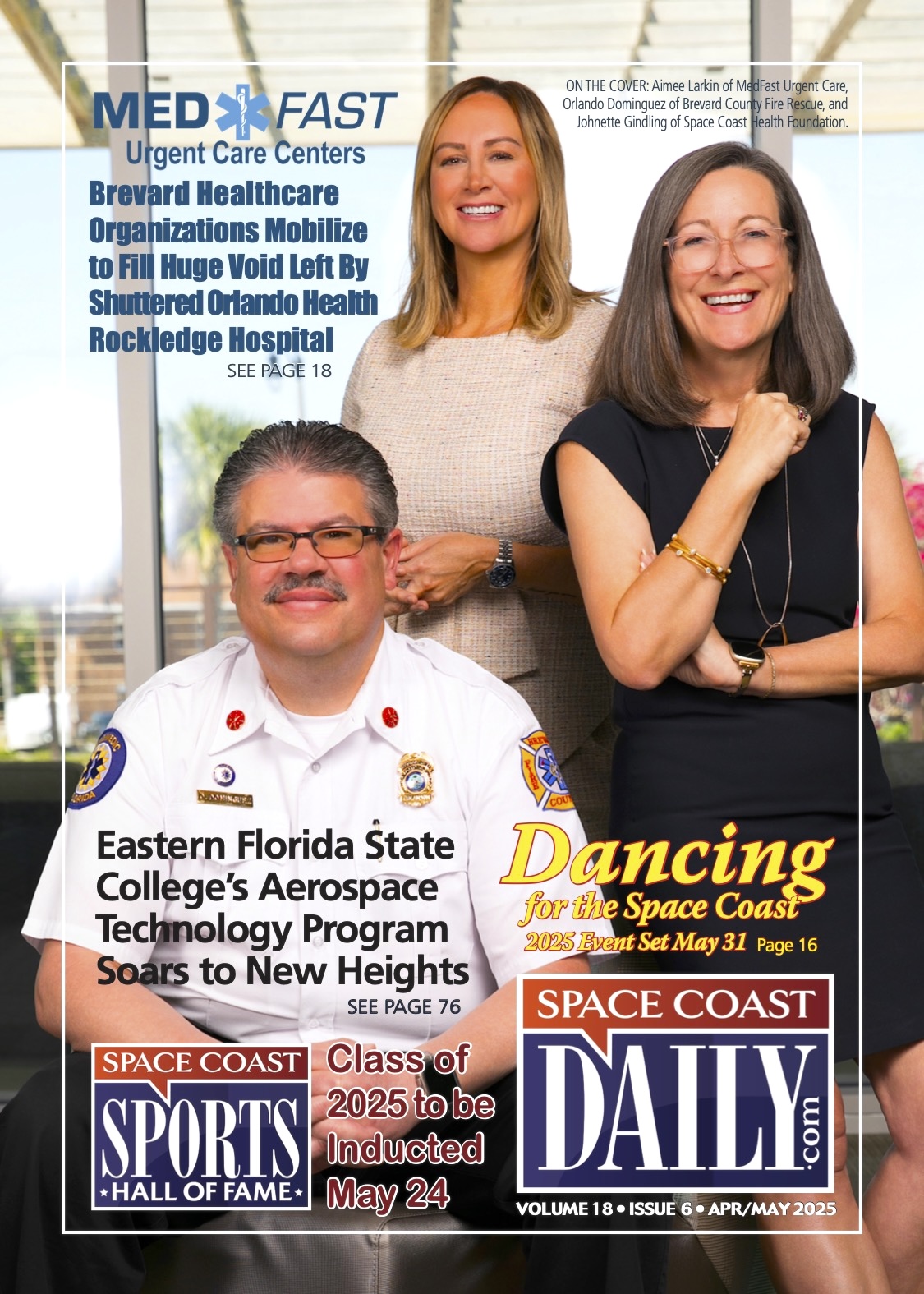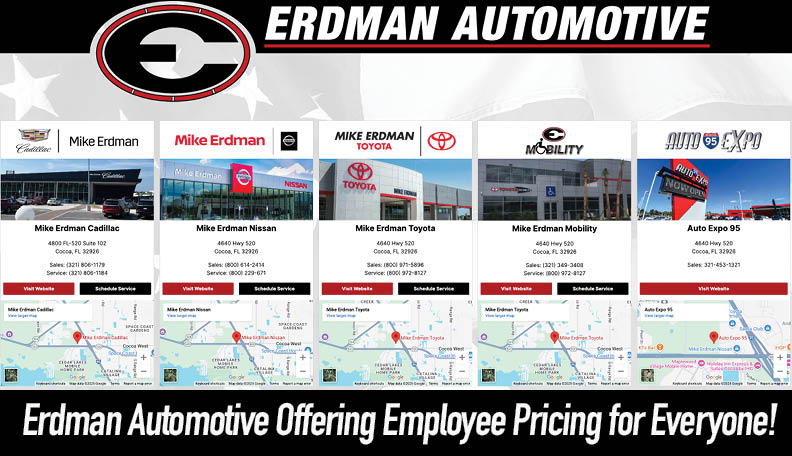DR. RICHARD GAYLES: Superion Indirect Decompression System Is Safe, Effective Treatment
By Dr. Richard Gayles, Lake Nona Medical Arts // December 13, 2016
Minimally Invasive Approach
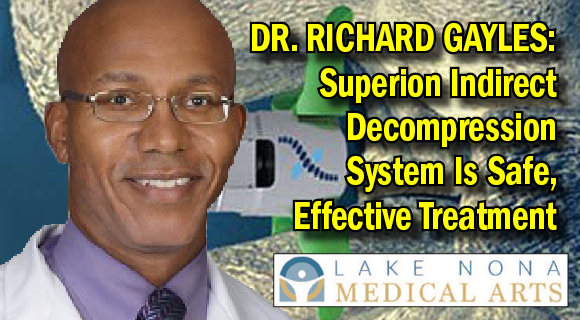
No pain, no gain. Thousands of athletes live by this motto. But what if your pain is not the effect of your daily workout but something you live with day after day?
New Minimally Invasive Approach To Treatment of Lumbar Stenosis
Back and leg pain affects millions of Americans every year, causing loss of mobility, lost work, and frustration. The thought of invasive back surgery, with possible problems such as surgical scars, lengthy recovery time and time off from work, is a difficult prospect.
However, there is now a treatment option that provides patients with new alternatives for a pain-free life.
The FDA recently approved a new treatment option for moderate Lumbar Spinal Stenosis (LSS): The Superion® Indirect Decompression System (IDS) is a safe and effective treatment for leg pain caused by moderate lumbar stenosis. This minimally invasive treatment fills the gap between conservative care and invasive surgery.

SIGNS, SYMPTOMS OF LUMBAR STENOSIS
Lumbar spinal stenosis can be the result of aging and “wear and tear” on the spine from everyday activities.
It is a narrowing of the spinal canal that may result in pain, numbness, tingling and/or weakness in the back and legs and is usually more noticeable when you walk and decreases when you sit or bend forward.
Lumbar spinal stenosis can produce a variety of symptoms:
• Dull or aching pain spreading to your groin, buttocks or legs
• Numbness or “pins and needles” in your legs, calves, or buttocks
• Decreased endurance for physical activities
• Loss of balance
• Sciatic pain
If you suspect you may have stenosis, see your doctor. It is important to rule out other conditions that have similar symptoms. Radiology tests, like MRIs or x-rays, may be needed to diagnose LSS.
TREATMENT OPTIONS
Conservative, non-surgical treatments options are the first approach and can begin with:
• Epidural steroid injections to decrease swelling and pain
• ERest and reduce activity level
• EPhysical therapy and exercise
• EPrescription pain medications
If these non-surgical treatment options offer no relief, you may require a more aggressive treatment, such as surgery.
Historically, the surgical alternatives were:
• Direct decompression surgery to remove bone and other tissue around the nerves causing pain. This surgery helps relieve pressure on your spinal cord and nerves.
• Decompression surgery with spinal fusion. In spinal fusion, a decompression surgery’s performed to remove bone and tissue. Then a bone graft is placed between the bones (usually vertebrae) in the area of the decompression surgery. The bone graft helps new bone to grow between the two bones to “fuse” them. This should stop motion in that portion of the spine. Screws and rods may be used to hold the bones in place.
THE NEW ALTERNATIVE
However, if you have moderate LSS with radiating leg pain and have been treated with non-surgical options for at least 6 months with no relief from your symptoms, there is another option before direct decompression or fusion surgery: The Superion IDS.
The Superion implant is a small titanium device available in different sizes to best match your spinal anatomy. It is inserted through a small cut in the lower back.
The Superion implant is delivered with no destruction of bone or tissue and minimal bleeding. The simple procedure can be completed in less than one hour and can be done in either the operating room at the hospital or at an outpatient surgical center.
The Superion implant is designed to keep your spine positioned so that when you stand upright the nerves in your back will not be pinched. You should not need to bend forward to relieve your pain with the Superion implant in place.
Research Shows IDS Pain Improvement Equal To Invasive Surgery
The Superion IDS has gone through a rigorous clinical trial and has been implanted in more than 2000 patients worldwide. The clinical trial results showed leg pain improvement equal to more traditional—and invasive—treatment options.
At four years after surgery, almost 90% of the patients in the clinical trial expressed continuing satisfaction.
This new treatment for LSS offers a minimally invasive approach to treating moderate lumbar stenosis that means hope for relief of ongoing pain without the long recovery of traditional decompression surgery. Have you been down the treatment road already?
If the epidurals and other conservative treatments didn’t provide the relief for which you were hoping, talk to your doctor about the Superion Indirect Decompression System. A life with less pain and more movement could be in your future.
SAFE AND PROVEN PROCEDURE
As an interventional pain management physician I have found treating lumbar stenosis with conservative means a frustrating process. If the stenosis (or narrowing) of the spinal canal is mild, then simple conservative interventions like physical therapy and epidural injection work very well. In these circumstances, the results of the injections can last for years.
However, if the stenosis progresses to the moderate/severe stage, then conservative care becomes ineffective and, until now, surgery was the only option.
This motivated me to seek other means of treating stenosis, and led to the intersection of my interests with the Vertiflex company.
This company was exploring minimally invasive options for lumbar stenosis, and developed the Totalis procedure. The Totalis procedure involved placing a small tube between the vertebral bones to enter the spinal canal.
Once the canal was entered an instrument was used to remove the thickened tissue (ligamentum flavum), which compressed nerves. I enthusiastically embraced this procedure and was invited to take part in a national multi-site research study sponsored by Medicare to test its effectiveness.
Totalis is a safe procedure but it could not treat stenosis caused by arthritis or bone spurs.
The Superion IDS bridged this gap and addressed stenosis from multiple simultaneous causes. It is simply a spacer placed between the bones, which opens the vertebral spaces in multiple places, and is even simpler and safer than the Totalis.
I have reviewed the research data and, after training with other physicians from around the country,
I am an enthusiastic advocate of the Superion procedure.
It provides an excellent minimally invasive option for moderate lumbar stenosis. and I am excited to offer this option to my patients at Lake Nona Medical Arts.
To make an appointment with Dr. Gayles, call 407-412-5030, and for more information, log on to LakeNonaMedicalArts.com
ABOUT THE AUTHOR
ABOVE VIDEO: Lake Nona Medical Arts, recently founded by Dr. Richard Gayles, takes you on a tour of his new practice. To make an appointment with Dr. Gayles, call 407-412-5030, and for more information, log on to LakeNonaMedicalArts.com
Dr. Richard Gayles is the founder and director of Lake Nona Medical Arts, and a graduate of the University of Michigan Medical School. After obtaining his medical degree, Dr. Gayles completed a residency in anesthesiology at The Johns Hopkins Hospital in Baltimore, Maryland. Subsequently, he held the post of visiting registrar at St. Bartholomew’s Hospital in London. Upon his return to the United States, Dr. Gayles completed a fellowship in chronic pain management at the Cleveland Clinic in Cleveland Ohio. Dr. Gayles is an Aviation Medical Examiner (AME) and a multi-engine instrument rated pilot. His interest in aviation led him to recently join Angel Flight, a volunteer organization which transfers chronically ill patients across country via private aircraft.
STRONG ADVOCATE OF REGENERATIVE MEDICINE
Dr. Gayles is a recognized leader in the medical field of pain management and a strong advocate of regenerative medicine.
Armed with the belief that healing begins when the mind and body are unified, he created Lake Nona Medical Arts with the knowledge that pain can be managed, if not completely eliminated, using the body’s natural healing resources, thus minimizing the need for invasive procedures and daily use of habit-forming medication.
Lake Nona Medical Arts is a collaboration of pain management and wellness experts who are devoted to your overall well-being, both physical and emotional.
“This collaboration of experts allows Lake Nona Medical Arts the ability to provide the patient with integrated, cutting edge treatments to pain, and comprehensive rehabilitation and psychological services,” said Dr. Gayles.
“Upon evaluation and diagnosis, we work together to develop a customized treatment plan to get you on the road to a healthy, pain-free life. Regardless of your pain, whether it be a sports injury, natural aging or an accident, consider our team of experts your own personal wellness consultants, giving you the power to heal and a solid path to good health.”
To make an appointment with Dr. Gayles, call 407-412-5030, and for more information, log on to LakeNonaMedicalArts.com
ABOVE MAP: Lake Nona Medical Arts is conveniently located at 9145 Narcoosee Road in the Lavina Marketplace, just 1 mile south of the 528 Beachline. Lake Nona Medical Arts was founded by Dr. Richard Gayles, a recognized leader in the medical field of pain management and a strong advocate of regenerative medicine.
